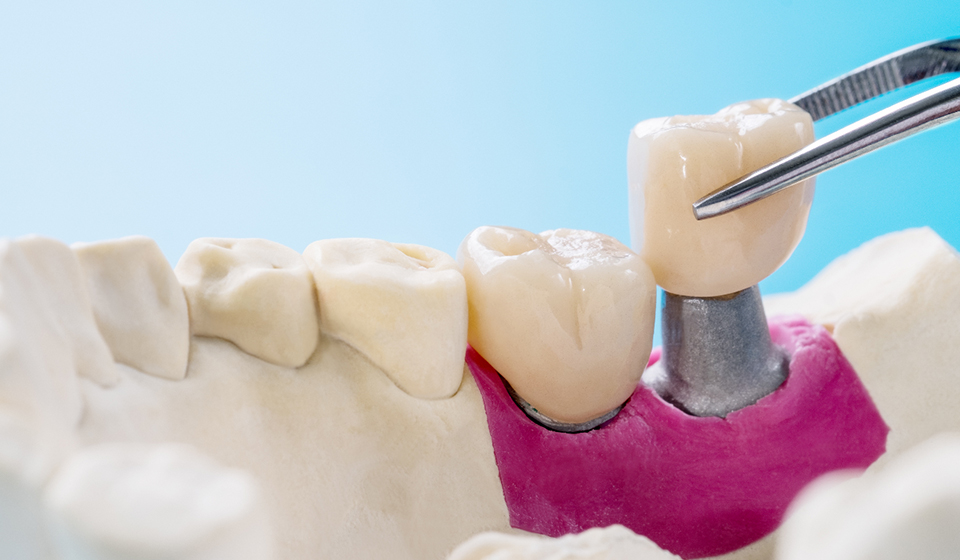A radiant smile has the power to boost confidence, enhance personal relationships, and even open doors in professional settings. For many individuals, dental issues such as chipped, cracked, or discolored teeth can hinder their ability to smile freely. Fortunately, dental crowns offer a transformative solution that restores both function and aesthetics. If you’re looking for high-quality dental crowns in Houston, you’ve come to the right place. Let’s dive into the remarkable before-and-after effects of dental crowns and why they’re a game-changer for many patients.
What Are Dental Crowns?
Dental crowns are custom-made caps that are placed over damaged or weakened teeth. These restorations are designed to blend seamlessly with your natural teeth, providing both durability and an aesthetically pleasing appearance.
Crowns can address a variety of dental issues, including:
- Severe tooth decay
- Broken or fractured teeth
- Discolored or misshapen teeth
- Teeth weakened by root canal therapy
- Gaps or alignment issues when paired with other treatments
The Before: Dental Issues That Require Crowns
Before receiving dental crowns, patients often struggle with various oral health and cosmetic concerns. These issues can negatively impact their daily lives in the following ways:
1. Physical Discomfort
Teeth that are cracked, decayed, or otherwise compromised can cause pain while eating or drinking. Sensitivity to hot and cold foods becomes a daily annoyance, and the risk of further damage increases without proper treatment.
2. Aesthetic Concerns
Discolored, misshapen, or broken teeth can detract from the overall appearance of a smile. Many people feel self-conscious about smiling in photos or speaking in social situations.
3. Functional Challenges
Compromised teeth can make it difficult to chew food properly, which may lead to digestive issues or dietary restrictions. Misaligned or gapped teeth can also impact speech clarity.
The After: Life-Changing Benefits of Dental Crowns
Once dental crowns are in place, the transformation is often nothing short of life-changing. Here are the key benefits patients experience:
1. Restored Functionality
Dental crowns restore the strength and functionality of damaged teeth, allowing patients to eat their favorite foods without discomfort. Chewing becomes natural and pain-free, making mealtime an enjoyable experience again.
2. Enhanced Aesthetics
Modern dental crowns are designed to match the color, size, and shape of your natural teeth. This ensures a seamless appearance that can dramatically improve the overall look of your smile. Patients often feel more confident and willing to share their smiles after receiving crowns.
3. Improved Oral Health
By covering and protecting damaged teeth, crowns prevent further decay or deterioration. This not only improves oral health but also reduces the need for more invasive procedures down the road.
4. Boosted Confidence
The psychological impact of a restored smile cannot be overstated. Many patients report feeling more self-assured in both their personal and professional lives after completing their treatment.
The Process: What to Expect
Getting a dental crown typically involves the following steps:
- Consultation and Assessment Your dentist will evaluate your teeth to determine if a crown is the best solution for your needs. X-rays or digital imaging may be used to get a detailed view of the affected tooth.
- Preparation The tooth is reshaped to accommodate the crown. If there is significant damage or decay, your dentist may first perform a root canal or build up the tooth with a filling material.
- Impressions Impressions or digital scans are taken to create a custom crown that fits perfectly. Temporary crowns are often placed while the permanent one is being fabricated.
- Placement Once the permanent crown is ready, your dentist will bond it to the tooth using dental cement. Final adjustments ensure a comfortable bite and natural appearance.
Why Choose Unident Family Dentistry in Houston?
At Unident Family Dentistry in Houston, we understand the profound impact a healthy, beautiful smile can have on your life. Our experienced team is committed to providing personalized care and utilizing state-of-the-art technology to ensure the best outcomes for our patients. Whether you need a single crown or a full smile makeover, we’re here to help you every step of the way.
If you’re ready to experience the life-changing effects of dental crowns, contact Unident Family Dentistry in Houston today to schedule your consultation. Let us help you restore your smile and confidence!






